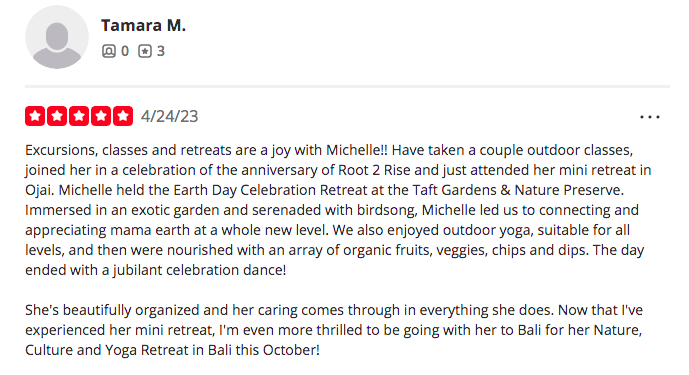Wholesome Vegan Bowl Recipe
4/5/2022
I had a brief downtime to play in the kitchen between teaching yoga classes today and created a simply delicious vegan bowl that my belly felt inspired to share! It's a triumvirate of nutritious plants: sweet potatoes (high in Vitamins A, C and B6 and manganese and potassium), kale (high in Vitamins A, K and C) and organic tofu (which includes all essential 9 amino acids that your body can't make on its own). Ingredients for 1 serving:
Here are the steps to make it:
How did you like it? Would/Did you add or subtract anything to the recipe? Share your experience below!Want to dive deeper into wholesome plant-based cooking? Itzel of Wild Love Vegan Foods will guide a class on weekly meal prep at our Women's Wellness Retreat, Thrive Together, and cater all our meals with her delicious vegan creations! Check out the itinerary here for May 6-9, 2022 and come join us!
3 Comments
Interested in simple, budget-friendly and healthy ways to prepare vegan meals in harmony with spring season? Here's a recording of my IG Live interview with Itzel, founder of Wild Love Vegan Food, which provides vegan catering and educational services and is based in Los Angeles, CA. Read her bio here, where she will be catering our Women's Retreat, Thrive Together, in Santa Rosa Plateau, Murreita, CA on May 6-9, 2022 and guiding a macrobiotic culinary class on weekly meal prep. Written by Michelle Chua Why and How I Came to Learn About ChakrasThrough past physical and emotional injuries, I’ve grown to believe in the inseparable relationship between my thoughts, emotions, energetic state and physical wellbeing. However, it took many years of studying yoga to finally dive deeper into the exploration of chakras, succinctly defined as energy centers in the body. I admit I had a slight aversion to using this word for a while, as it’s been a trendy buzzword in the modern Western yoga circles and has unfortunately been dismissed by some as woo woo. However, studying the chakras with an open mind can provide practical insights for optimizing your well being on many levels. As I sought to deepen my yoga practice years after I first tried yoga in 2001, I grew interest in understanding chakras and how such knowledge might empower my personal practice, and now as a yoga teacher, help me facilitate more informed multi-dimensional practices for my students and clientele. When the pandemic hit California in spring 2020, energetic turbulence clouded my mind and body. Repeated trail-running injuries drew me to investigate how my specific thought patterns, intense emotions and chronic injuries were related. I researched psychology literature online and read books by mindfulness teachers. I met with intuitive energy healers (from reiki to pranic healing and mindset coaching), dove into trauma-informed yoga courses and eventually graduated from a neuroscience-backed 300-hour Yoga Psychology certification program that focused largely on the chakras and their connection to mind-body-spirit healing, including for traumas rooted in childhood and ancestry. Most intimately, I integrated what I was learning into my daily self-care and experienced directly how chakra-informed yoga affected my layers of self—from physical to spiritual. I’m deeply thankful for this journey and what it’s taught me, so I’m inspired to share basic chakra information as practically applicable as I can from my experience, research and teachers. Human Energy Centers Across Cultures Physicist Albert Einstein (1879-1955) famously concluded, “Everything is energy and that’s all there is to it. Match the frequency of the reality you want and you cannot help but get that reality. It can be no other way. This is not philosophy. This is physics.” Greek Physician Hippocrates (ca. 460 bce—ca. 370 bce) believed that body and mind are a unity, and to affect one is to affect the other. Different cultures have similar teachings about the mind-body connection and energy centers within the human body that affect mental, physical, emotional and spiritual health. Mayan culture named chaclas as force centers in the body and kultunlilni as the life energy and the power of consciousness, spurring human growth and development. (See Similarities between the Hindu and the Maya Culture) In ancient Egypt, an energy healing practice called sekhem, worked to harmonize and balance a person’s physical, mental, emotional and spiritual wellbeing through energy centers. (See Sekhem - A Form of Ancient Egyptian Healing) Chinese Medicine names six yang and six yin main meridians, or complimentary channels of qi, or life force energy, in the human body and promotes healing through balanced energy flow through them. (See Traveling the Energetic Highway: What are Meridians?) These are some globally impactful cultures that have parallel systems to the chakras. Perhaps you know of others? Chakras: Brief History and Definitions According to Tantric Academy, the notion of chakras originates from about 2700 years ago and was first mentioned in sacred Hindu texts, called Upanishads, in 700-800BCE. However, knowledge of the chakra system was most likely passed down through oral tradition prior to written recordings. According to my teacher Ashley Turner’s research in Yoga Psychology, chakra is a center of activity that receives, assimilates and expresses life force energy. Its literal translation from Sanskrit is “wheel” or “disc” and “denotes a point of intersection where mind and body meet,” according to Anodea Judith, PhD, author of Wheels of Life: The Classical Guide to the Chakra System. Anodea explains, “To work with the chakras is to heal ourselves of old constricting patterns lodged in the body or the mind, or habitual behavior.” Through the lens of Developmental Psychology, Ashley conveys that the vitality of each chakra is affected by how a person has digested their experiences within a correlating phase of their human development and that each chakra links to specific glands of the endocrine system, affecting their bio-chemistry. Spiritual teacher, Shai Tubali, drew an insightful parallel to the wellness needs of each main chakra to each stage of Psychologist Maslow’s Hierarchy of Basic Human Needs—from food and safety to self-actualization. While a human’s energy body, named Pranamaya Kosha in yoga philosophy, contains over 70,000 nadis, or energy channels, a compounding number intersect at seven main points that lie along the spine, and these are the 7 main chakras I will focus on describing next. Overview of the 7 Chakras“Understanding the chakras gives us self-knowledge at every level of our being,” wrote Sandra Anderson in Yoga International, “The chakras govern our behavior, shape our emotional life, give expression to our deepest desires, and build the structure of our physical body and personality.” Whether or not you fully subscribe to the details about chakras, consider the following information as an invitation to look into these various aspects of your life when tending to your whole wellbeing. Here’s a brief overview of each main chakra, its physiological location, its mind-body characteristics when in balance, it’s associated endocrine gland, the developmental stage that highly influences its health and a few practical ways to cultivate its wellness: 1. Root Energy Center (Muladhara Chakra) spins at the base of the spine and offers a sense of safety, belonging and feeling supported in all aspects of life, including feeling connected to Mother Earth and to your physical body. It’s linked to the adrenal glands, which spurs us into fight or flight reactivity when we perceive that our sense of survival is threatened. It’s highly influenced by the experiences you had as early as when you were a fetus in the womb through 12 months after birth, affecting physical growth, motor skills and sense of object permanence. Cultivate balance at your root energy center by regularly spending quality time in nature-- mindfully breathing, earthing with bare feet, preparing your meals with your hands using whole foods from the earth, running, walking, hiking, gardening, swimming or practicing grounding yoga. 2. Sacral Energy Center (Svadhistana Chakra) spins at the area of the sacrum or lower back and lower belly. It gifts the ability to trust our emotions as guides, adapt to change, honor our sexuality and sensuality and play in life’s flow. It’s related to the ovaries and testes, sexual organs of reproduction. It’s greatly affected by your experiences during 6 to 24 months old, characterized by sensate exploration of the world and beginning locomotion. Support its health by practicing moving your body with ease and fluidity and enjoying healthy sensual pleasures, like eating delicious meals, dancing, playing and having meaningful conversations with friends and loved ones. 3. Solar Plexus Energy Center (Manipura Chakra) spins at the upper abdominal/middle back region. It provides our fire for action towards our vision and soul purpose, ability to digest life situations and extract the “nourishment” needed for our continued evolution and ability to tame our ego and feel genuinely confident. It’s connected to the adrenals and pancreas. The latter helps digest food and manage your body’s use of sugar for energy after digestion. It’s affected by your development during 18-42 months old, when you’re initially establishing a sense of separateness and autonomy, like learning to say, “mine” and “no.” Nurture its wellbeing by building self-trust and confidence, facing your fears and decluttering your life and home of what no longer serves your highest wellbeing. 4. Heart Energy Center (Anahata Chakra) spins at the middle of the chest and upper back. It balances our giving and receiving of unconditional love, our essence or true nature, and enables forgiveness, compassion and pure joy. It’s associated with the thymus gland, which helps the body fight infection and is a part of your immune system. It’s largely affected by your experiences during 3.5 to 7 years old, in which you’re forming loving peer and family relationships and developing persona. Balance energy here through regular yogic breathwork, practicing forgiveness and compassion, singing and laughing, connecting with other beings or animals and allowing yourself to experience joy daily. 5. Throat Energy Center (Visuddha Chakra) spins at the throat and offers the ability to communicate with clear intent and loving kindness, listen with empathy and express yourself creatively. It’s associated with your thyroid, which regulates metabolism, and parathyroid, which affects calcium levels in your blood. It’s highly influenced by your experiences during 7-12 years old, especially focused on your speaking and hearing truth. Cultivate its health by voicing your truth, singing and chanting, journaling, establishing healthy boundaries by saying “no” when you need to, exploring creative means of expression through art and practicing whole-being listening to understand others’ feelings and needs when they’re communicating to you. 6. Third Eye or Brow Center (Ajna Chakra) spins at the center of the forehead and gifts connection to inner guidance, ability to see past delusions, including false inner narratives, and wise discernment to see the bigger picture of your spiritual journey amid challenging situations. It’s associated with your pineal gland, which produces melatonin, regulating your circadian rhythm. It’s highly affected by puberty and establishing personal identity and perceiving patterns in life. Nurture its wellbeing through regular meditation, developing a regular spiritual practice, practicing gratitude, journaling about your dreams, creating or viewing visual art, listening to music, strengthening your connection to your intuition and visualizing. 7. Crown Energy Center (Sahasrara Chakra) spins at the crown of the head and gifts an internalization of the knowledge that all is connected. It’s connected to your pituitary gland, considered the “master gland” in that it regulates the many other endocrine glands throughout the body and affects vital parts like your brain, skin, energy, mood, reproductive organs, vision, growth and more. Its health is greatly affected throughout the stages of life in your assimilation of knowledge and development of wisdom. Cultivate its vitality by meditating daily, practicing compassion for yourself and all of life, reading wisdom texts by inspiring spiritual teachers, spending regular quality time with nature and sharing your joy with others. This information is a concise compilation of key points to acquaint you with general qualities of each of the seven chakras. Most importantly, observe, experiment and reflect on how these suggested practices or your current daily doings and interactions affect you physically, mentally, emotionally and energetically. Are there any impactful events you experienced during your specific developmental stages that may continue to affect your overall health? Do you experience patterns of high or low energy in certain aspects of your being or life? Do you notice any patterns of thoughts and beliefs related to patterns in your physical wellbeing or relationship with others? Self-study is an important practice of yoga and maintaining whole-being wellness. And, chakra-informed and skillfully sequenced yoga—from poses, movements, breathing techniques, meditations and life applications—can help address certain conditions of mind-body and invite balance into certain chakras. May this knowledge contribute to your leading a conscious, happy, healthy and fulfilling life, as you nourish yourself at every level of your being and ripple that thriving presence into our world! Explore natural lifestyle habits that help balance your 7 chakras at our upcoming Women's Wellness Retreat, Thrive Together, on May 6-9, 2022 in Santa Rosa Plateau, CA with Michelle Chua.
Nearing a new year can stir up a mixed emotional bag of hopefulness and anxiety. After the rush of the celebratory countdown and the lull of post-party recovery, a sense of urgency may follow. Perhaps, as I’ve done in the past, a cloud of guilt and dissatisfaction storms in with the demands of New Year’s Resolutions, driven by self-judgment. Personal development is fundamental, but when laced with condemning should’s and shouldn’t's, this mindset can easily lure you into self defeat. Instead, what about exploring ways to shed the social conditioning of not being enough and not having enough? What about practicing ways to remember that vibrant wellbeing, peace and abundance are your true nature? If a fulfilling life journey is marked by moments of wholeheartedly expressing your true nature (your inherent state of pure love and wholeness), how about stepping into the New Year with intention and mindfulness as a means of unveiling that? Here are five ways: 1. Take a reflective pause. Amidst the year-end sales, winter weather, family gatherings and socials, carve out a moment for yourself to connect with your inner being. This moment could be 20 minutes on a silent nature walk in your neighborhood, unplugging from internet devices and intently seeing, hearing and smelling the natural world around you. This moment could be having a meal in solitude, simply breathing, tasting, smelling and appreciating healthy nourishment. If you'd like to be guided through a reflective pause in nature, consider joining this afternoon mini-retreat on January 30 in a magical garden in Ojai, CA. 2. Connect with your intuition. Find your personal way to surrender to creative flow. Write stream-of-consciousness style in your journal with your timer on for 5 minutes. Engage in an art activity you enjoy for the sake of immersing playfully in the present moment. Allow yourself time to fantasize your answer to this question: If anything is possible, what new adventure does my soul wish to embark on this year? Connect wholeheartedly to the joy of possibility. 3. Ground in “what is.” Just as it is important to play and befriend your imagination, living intentionally entails self-awareness and understanding areas needing healing or growth. Truthfully assess the state of different aspects of your life, such as finances, relationship to self, relationship to family, work life, physical health, mental well being, sense of spiritual connection, recreation and hobbies. What do you currently spend most of your time and energy on? With non-judgment, notice if this aligns with what’s important to you. Depending on your processing style, consider creating a pie chart, journaling or discussing this with a trusted friend. Celebrate areas in your life in which you feel successful or have made progress in. Pinpoint areas where you would like to create a conscious shift and consider listing actions to take to move forward on our journey. Avoid overwhelming yourself with too many items on your list by perhaps choosing a theme for your year ahead and starting with basic doable steps. 4. Commit to connecting to your joy and inspiration daily. Decide on your personal values that you feel devoted to as you step into the New Year. What daily practice can you do, no matter how small, that connects you to what you love and care deeply about? For example, if you are devoted to feeling and being healthy, what action can you take first thing each morning that contributes to your feeling of wellbeing? Perhaps, before opening your eyes each morning, begin with the thought: Today, I’m grateful for… Use this to cultivate an attitude of gratitude to spark joy at the start of your day. Consider starting 28 days of guided daily physical yoga, skillful breathing and meditation for 10-20 minutes using Daily Yoga Habit. 5. Create the space for what you invite. Whatever your intentions may be for the New Year, does anything need to be de-cluttered or released in order to allow yourself to be open for what you’re calling in? If you’re choosing to focus on a healthy lifestyle, scan your home for any items that may not serve this intention. Consider donating them. Are there old beliefs that no longer serve your wellbeing or the wellbeing of your relationships? Consider ways to address them at their roots and finding resources and tools, such as therapy or mindfulness meditations, to help you move through areas where you may feel stuck or energetically blocked. Here’s a 5-step guided mindfulness practice for transforming negative thoughts, derived from Dr. Henry Grayson in his book, Mindful Loving: 10 Practices for Creating Deeper Connections. As Yogi Sri T. Krishnamacharya said, “Yoga is a process of replacing old patterns with new and more appropriate patterns.” With self-compassion and mindfulness, notice the ways you can allow space for what you’re inviting into your life in the New Year. It’s essential to remember that these practices are a continuous process, not a one-off. Our human journey is filled with seasons and cycles of feeling blissful and encountering challenges to awaken our continued expansion of consciousness and everything in between. Let the new year serve as among the many times of the year when you reassess, reflect, realign, celebrate, release, forgive, allow grace and keep flowing. Use the consistency of your mindfulness and intention-setting practices to strengthen your ability to ground in clarity and express your true nature in your most expansive uniqueness. This New Year, let’s celebrate that we’re both a masterpiece and a work in progress! Author Michelle ChuaMichelle Chua has been facilitating yoga since 2010 and loves sharing her passion for living the practice off the mat, especially by starting each morning with that intention. Daily Yoga Habit is her new online offering that starts January 1, 2022 for 28 days. Learn more... For weeks I've been craving Vietnamese Spring Rolls and just haven't gotten around to ordering them. So, I finally decided to try to make them for the first time. I'm writing this after my happy dance of mindfully devouring the rolls pictured above, for which I'm excited to share the recipe for here. After skimming a couple of vegan recipes online, I tailored this one to the ingredients I had at home at the time and for a healthy balance of greens, not too much rice ingredients. Here are the ingredients I used:
STEPS:
4. Soak one spring roll paper in a large bowl of warm water for 10-13 seconds, until it becomes more pliable but not too soft. Then, drizzle some peanut sauce over it. 5. Place the rice paper on a dry plate and add on top, across the diameter: a large leaf of butter lettuce, 2-3 strips of tofu, 3-4 avocado strips, 5-6 carrot strips, a large pinch of broccoli sprouts and a few leaves of each herb to your taste preference. Drizzle a love-squeeze of the lemon half over this, to your taste preference. 6. Tuck each opposite end of the rice paper inward, and tightly roll the paper as if shaping a burrito. As you can see, I need some practice working with the sticky rice paper! Feel free to share your comments below on your techniques for doing this neatly. 7. Finally, add some peanut sauce on a separate saucer for dipping. To tame the pitta dosha, or fire-dominant mind-body, as categorized in Ayurveda, yoga's sister science of holistic health, cooling foods like these fresh vegetables can be helpful. I see it as a salad in a wrap, perfect for summer. Thus, I named this version Summer Rolls. I hope yours moves you into a happy food dance, too! Buen provecho!
You Are Going to Be OK. by Michelle Chua
8/19/2021
Right where you are standing or sitting, how many miracles can you appreciate around you? Honestly, I invite you to give yourself a moment to see them, feel them and remember that however difficult a given moment might be, you are so deeply unconditionally loved. Perhaps by your partner or family or friends.
AND an even greater infinite love exists beyond all forms, that you and I are inseparably a part of. This I believe, even though the human me sometimes forgets. This weekend, however, I got a huge reminder. Friday night began with chills, aches, fever and sharp stomach contractions. So I called off all my Saturday yoga classes, to not spread anything, just in case. Saturday it all continued as I stayed in self-nursing, eating to heal, lying in restorative yoga, practicing breathwork and meditating. Fearing that C word, I got tested. I canceled performing in a big show for Sunday. Through it all, however, a persistent voice kept reassuring me, "You are going to be ok." Sunday the fever subsided. That evening as I was cuddling with a dog I had grown so fond of that my partner had been caring for. I gave it a hug not realizing it had softly growled. It bit my face. I spent the next 9 hours in the ER. Box breathing and meditation made the hours pass more quickly with peace. I was greeted by one nurse after another with such lighthearted comforting care. I felt like I was with relatives (They sounded like my aunts). The surgeon, who looked like he was 23, felt so grounded and skillful. Compassion came from all directions that I could feel that formless love in all of those beings. This weekend was a big reminder that adversities can be opportunities to reawaken to the daily miracles we can become desensitized from appreciating when we're going about our usual patterns. (PS--Both COVID tests were negative.) This reframing of our daily perspective is a huge focus of our upcoming online series, Daily Yoga Habit, starting jan. 1, 2022. 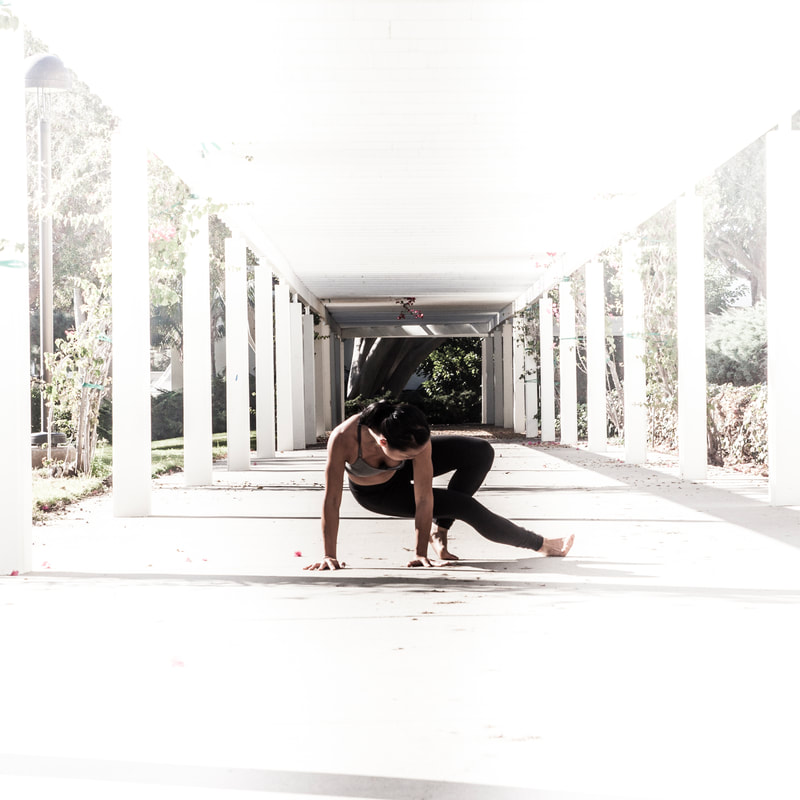 Do you ever suffer from nagging thoughts that just disturb your inner peace? It may fit into one of the seven categories of mental patterns that exacerbate stress and pain, identified as “mindtraps” in Mindfulness-Based Stress Reduction Workbook, written by Bob Stahl and Elisha Goldstein. In understanding these common mental habits, we can apply the yogic practice of svadhyaya, or self-study, to cultivate loving self-awareness and remember that we don’t have to believe every though that arises. As we shed light on such repetitive thoughts and their effects, we can consciously choose what thoughts to feed with our attention and those we can release or change. Thus, we can skillfully train our minds toward inner peace. Here is a brief explanation of the 7 Mindtraps and ways to address them:
May this brief glimpse into possible mental patterns provide personal insight towards self-liberation. While this is only from one source, perhaps it sparks more self-inquiry to dive deeper into your own mind’s tendencies. One of my favorite quotes from The Yoga Sutras is “The mind is the ground for both bondage and liberation.” Understanding the patterns in our minds is a doorway to freeing ourselves from unnecessary suffering. As Lao Tzu was quoted for saying, “Watch your thoughts, they become your words; watch your words, they become your actions; watch your actions, they become your habits; watch your habits, they become your character; watch your character, it becomes your destiny.” Dive deeper into these Mindfulness Tools for Stress Relief at our in-person Women's Wellness Retreat, Thrive Together, on May 6-9, 2022 in Santa Rosa Plateau, CA with Michelle Chua.
Build your daily doable and impactful yoga self-care habit, with 10-20 minutes of guided practice for 28 days.
1. Relieve Stress
Deep breathing and meditation induce the relaxation response of the parasympathetic nervous system, according to Yoga Psychology teacher trainer, Ashley Turner. This shifts the body out of the “fight, flight, collapse or freeze” stress response of the sympathetic nervous system. Yoga postures help to reduce muscle tension, which also deactivates the stress response. Studies, such as one conducted in 1995 at Thomas Jefferson Medical College in Philadelphia, showed a decrease in the stress hormone, cortisol, after practicing yoga asana. 2. Boost Immunity According to studies cited in The Journal of Alternative and Complementary Medicine in 2020, yoga with breathwork and meditation demonstrate anti-stress and anti-inflammatory properties. They increase the vagal tone, which regulates the body’s stress response. Thus, stress hormones are lowered. Also, numerous postures, like a sequence of backbends, forward folds and spinal twists, and warming breathwork, like Breath of Fire, or Kapalabhati Pranayama, are geared toward aiding digestion, known as a central component of immune system health. Pranayama conditions the lungs and maximizes breathing capacity, combatting “disturbed irregular habits of breathing” associated with chronic respiratory illnesses that “are directly linked to a weakened immune response,” informed Gary Kraftsow in his book, Yoga for Wellness. 3. Increase Mobility + Flexibility An intelligently sequenced physical practice with mindful breathing, warm-up movement, optimally aligned postures that increasingly deepen stretch in targeted areas of tension and counterbalancing postures within the same antagonist muscle groups help increase mobility and flexibility over time, especially when practiced daily. 4. Improve Posture + Breathing Asanas, or yoga poses, help to realign the major joints in your body facilitating an upright, open and relaxed physical posture. When the chest, neck, shoulders and overall spine are continuously opened in different postures, breath can flow more easily and deeply. 5. Cultivate Steadfastness + Loyalty to Yourself Making a commitment to show up each day to care for your body, breathe through whatever life brings you in the ever-changing moment and sit with your mind to nonjudgmentally watch how it responds to the world cultivate steadfastness and loyalty to yourself, as Mindfulness Teacher Pema Chodron says about meditation. It also strengthens your willpower, making a habit out of following through with self-care, even on days when it’s challenging. 6. Daily Spiritual + Mental Hygiene Witnessing the fluctuating thoughts of the mind in meditation enables the meditator to see past their own mental habits, such as the negative chatter of the inner critic. Just like daily oral hygiene cleans the teeth, or tools of digestion, daily mental hygiene through meditation brings clarity to the mind, or tool of perception. Meditation is a constant opportunity to become aware of and consciously release the accumulation of harmful thought forms. 7. Interrupt Unhealthy Patterns in Body, Breath + Mind Thoughts and emotions are energy and affect the breath and body. For instance, anger can manifest as short quick breaths, a frowning face and tense jaw, neck and shoulders. A constant state of anger can turn these manifestations into a prolonged way of breathing and tensing the body into such a posture. Yoga poses, such chest-expanding backbends, and breathing techniques, such as sustained abdominal breathing, interrupt such patterns and consequently affect the mind’s state. Meditation can create a pause between the stimulus of anger and the physical and mental reaction, offering the meditator a more conscious choice of how to respond. 8. Cultivate Equanimity + Intrinsic Peace Equanimity is the mindfulness quality of gaining a balanced perspective of life circumstances, rather than being pulled into the highs and lows of reactivity. This powerful skill for inner peace develops as a daily meditator is able to discern the impermanence of events, emotions and thoughts, not relying on them as sources of happiness or permanent identity. The ability to breathe evenly and mindfully through yoga postures of varying degrees of comfort and reasonable challenge allows the freedom to choose an inner state of mental-emotional balance. 9. Connect with Your Inner Wisdom Meditation is an intimate meeting with your inner source of wisdom. Physical yoga is attuning with your body’s wisdom. Yogic breathing bridges the wisdom of the mind and body. 10. Strengthen Your Mindfulness Muscle of Nonjudgmental Present-Moment Awareness Paying attention on purpose and without judgment to the present moment to the sensations that arise within a yoga pose, to subtle energetic shifts within a breath practice or to the tendencies of the mind are the practice of mindfulness. Practicing this daily allows accessibility to mindfulness as a ready and familiar tool for other daily events, like eating mindfully, conversing with a friend with loving attention or driving home from work with nonjudgmental perception of other drivers. 11. Develop Daily Tools for Self-Regulation (Grounding + Embodiment) Rather than dissociating with what’s happening in the moment, yoga teaches embodied presence: tuning into the subtler felt sense message of the body. Rather than getting carried away by a reactive chain of thoughts into the past or future, being in the direct present experience of the body empowers a feeling of safety, groundedness and awareness of life as it is happening now. Examples of self-regulation tools from yoga include box breathing, or sama vritti pranayama, restorative yoga poses, forward folds and chanting meditation to self-soothe through resonant sound. 12. Establish a Loving Relationship with Your Body Showing up daily to care for your body on days when you feel energized and inspired and on days when you feel unmotivated reinforces the message that your body’s wellbeing is important to you. Approaching the postures with the yogic quality of balancing effort with ease allows the body to feel nurtured. There becomes a synchronistic dance of communication between your body, mind and spirit that can continue into the rest of your day after your practice. 13. Increase Circulation Mindful breath-led movement through various yoga poses enables circulation of blood, energy and life force, releasing stagnation mentally and physically. Blood flow is reversed and stimulated in inversions, like shoulderstand, or salamba sarvangasana, and restorative legs-up-the-wall, or viparita karani. Spinal twists stimulate the abdominal region, where digestive organs reside, thus increasing blood flow and movement of food in this area. 14. Cultivate Self-Awareness Our habits of doing and being in daily life often show up in our yoga practice, which can become a laboratory of self-study, or svadhyaya. For instance, the tendency to rush from one pose to another may reveal the ways we rush through life experiences. As we experience the effects in the microcosm of physical yoga, we can see parallels in the effects in the macrocosm of our personal lives. Our practice can be a mirror for self-reflection that empowers us to live more consciously. Additionally, as you learn the various traditional limbs of yoga and apply them with integrity and consistency over time, mental habits based on egoic misperceptions that cause suffering, become more apparent for you to release. 15. Build Self-Trust + Confidence Taking consistent action aligned to your core values, presuming it’s in the realm of optimal mental, physical and spiritual health, builds self-trust. The harmony between beliefs and actions experienced when acting with integrity and love-inspired discipline empowers self-confidence. 16. Naturally Regulate Your Energy Different poses and breathing techniques can be skillfully used to either energize or relax the body and mind. A daily practice of various types enables you to build your own practical “inner pharmacy” of natural ways to help regulate your energy throughout the day. 17. Sharpen Your Focus + Increase Productivity Synchronizing your breath and body in vinyasaflows or holding still in an asanafor several breaths requires sustained mental focus. Meditation begins with concentration, practice, or dharana. Directing the breath intentionally requires skillful presence. Throughout the yoga practice, you are training your mind to let go of distractions, through the yogic practice of pratyahara, and to be intentional on what it focuses on and thus directs your energy towards. Applying the same skills off the yoga mat empowers the ability to concentrate and be productive in other tasks. 18. Reduce Anxiety Anxiety is characterized as worrying about the future and not being present. Yoga is a constant practice of being present in your body, breath and mind. As you develop self-awareness and self-regulation tools through yoga, you are also building a toolbox on how to deal with anxiety as it arises. 19. Counteract Depression During yoga, including breathwork and meditation, feel-good hormones, dopamine, norepinephrine and serotonin, are released. Meditation, the process of stepping outside of mental patterns, creates new neuropathways in the brain, increasing patience, empathy and positive thinking, according to Yoga Psychotherapist Ashley Turner. 20. Build Physical Strength + Balance The multitude of yoga poses is bound to reveal imbalances of strength and flexibility in the body. Moreover, their variety—from 4-limbed staff pose, or chaturanga dandasana to warrior 3, or Virabhidrasana3-- require learning to engage different muscle groups to support the health of joints, like within the spine. Balance is also challenged and refined, using different parts of the body as the base of support as an experienced instructor guides you through wisely sequenced poses to help you transfer skills from simpler poses to more challenging ones. 21. Befriend Your Mind + Emotions Body, breath and mind awareness are developed so that over time of consistent practice you can habitually take the seat of wise witnessing presence. Meditation can be used to befriend emotions, not bypassing difficult ones or falling dependent on pleasurable ones. Rather, you can use your emotions as tools for awareness. Through this constant practice of clear seeing, you can bridge the practice of befriending, or having an all-encompassing caring curiosity, onto the ebb and flow of situations that arise throughout the day. These are only 21 of a a multitude of benefits of practicing yoga daily. Meditation is a large aspect of yoga. Read on here to learn what Psychology Today says in their article, 20 Scientific Reasons to Start Meditating Today. Want to start or renew a daily doable yoga practice, with meditation? Check out Daily Yoga Habit, a 28-day kickstart to your personal daily self-care ritual. It's only 10-20 minutes a day at your place and your time and begins on March 21. Space to See Clearly by Michelle Chua
4/25/2021
Ever feel triggered? It’s that feeling of being hijacked by a strong emotion, such as anger, where a chain reaction of thoughts lead you into reactivity, or impulsive action. Or, when you’re deep in a state of happiness, do you ever suffer from the thought of never wanting to let it go? Perhaps sadness, desperation or obsessiveness creeps into what was a joyful moment.
Equanimity is a powerful tool for regaining inner balance and peace, during whatever high or low part of life’s rollercoaster you are experiencing. Yoga philosophy identifies root causes of human suffering, called kleshas, and are commonly based on mistakenly perceiving that our identity is whatever impermanent state, such as emotions, we’re experiencing and forgetting that life is ever-changing. It includes being constantly driven by our aversions, such as resisting and running away from what we dislike, and our attachments, such as clinging to or continuously running after what gives us pleasure. Both kleshas of aversion and attachment create a lens of dissatisfaction and restlessness. Equanimity is the ability to accept that impermanent highs and lows of life are inevitable and being able to source balance and clear perspective from within to respond to the moment with presence, not reactivity. It’s also important to clarify what equanimity is not. Just because you accept that life happens, it doesn’t mean you have to approve of what’s happening, such as social injustices, or that you should sit back and do nothing, feel nothing. In contrast, it requires a level of emotional intelligence and self-awareness that empowers you to notice when strong emotions begin to arise and to exercise your freedom to choose to pause and not be overcome by their trance. This “space between stimulus and response,” as Viktor Frankl described, “is our power to choose our response,…(wherein) lies our growth and our freedom.” Moreover, unlike indifference or dissociation, equanimity involves recognizing and feeling the strong emotions and expanding your heart’s capacity to include the whole spectrum of human emotions. It also entails understanding any layers of emotions that may sit beneath the surface of the louder emotions. For example, underneath anger may be sadness and hurt. In so doing, you can see yourself and act in the world with nonjudgmental truthfulness and from a compassionate wise heart. It takes courage to look inside yourself honestly before acting outwardly and to act intentionally and wholeheartedly. So how do you develop equanimity? If you are prone to reactivity, as our human brains are wired to have the “fight, flight, freeze or collapse” stress response for survival in the wild, then it takes a shift of perspective. As you understand the value of equanimity for inner and outer harmony and spiritual well being and evolution, you may feel more inspired to invest your energy in strengthening this inner muscle. Daily meditation practices are useful to learn to mindfully observe your emotions and thoughts and allow yourself to feel whatever arises without having to fight or flee from it. Specific guided meditations on dealing with difficult emotions and on befriending varying circumstances you might deem positive or negative can help. Through a well-rounded yoga practice, you can develop self-regulation techniques for soothing your mind and body out of a stress response by using physically grounding postures and movements, conscious breathwork to activate the parasympathetic nervous system and mental focus to stay present in your body even in discomfort. Introspective practices, such as journaling and sharing your personal experiences with a trustworthy witnessing presence, such as a friend or community member, can increase self-awareness and cultivate the habit of identifying emotions and self-inquiry to trust your inner wisdom. Practicing the tool of equanimity when you’re not in the heat of strong emotion can make this skill more accessible and familiar to exercise when you do encounter life’s unexpected circumstances. Finally, equanimity is a worthwhile mindfulness skill to invest your energy in learning. Your direct experience of the inner state of balance it builds can be the most convincing reason to practice it. Its impact can extend beyond small disappointments into tragic situations and can affect not only your well being but those with whom you affect through your presence, especially in times of difficulty when a calm and collected mind is direly needed for decision-making. With an open heart, wise mind and calm body, your skillfulness in equanimity can contribute to balance, peace and harmony in the greater community. |
A Collective Blog about Yoga Lifestyle & Inspiration
|
REviews of Root 2 Rise Yoga with Michelle chua:Michelle truly lives out what she teaches. She is so much more than a yoga teacher - I learned this when I went on her exquisitely curated trip that she organized to Costa Rica this past June 2018...Hopefully like me, you'll be delighted by her effervescent love of movement, nature, and all people! Michelle clearly stands out with her beautiful and bright energy. I love how her practice and teaching encompass body, mind and spirit. She not only teaches yoga but lives and exudes it. Michelle not only teaches 'yoga', she embodies it fully with her heart and soul... Michelle is by far one of the best instructors I've ever had, period. Patient, clear in her explanations and demos, and so encouraging... My first yoga class was with Michelle years ago. You can have the best (yoga pose) sequence and not teach from your heart. With Michelle, I also feel her passion when I'm in her class. I can see she loves what she does, and she inspired me to want to teach yoga, too. |
Let's connect:Now offering private reiki sessions for stress relief and healing.
I'm so grateful to have met Michelle! Her kind energy opened up my interest in pursuing yoga and meditation. She is such an incredibly light and soul. She starts with grounding ourselves through mindfulness and breathing exercise. She brings the most authentic energy to the class by sharing the history and understanding behind poses, names, and techniques. I truly appreciate her work and impact on my well-being! I’ve had dozens of instructors over the years, but Michelle is far and away the best yoga mentor I’ve ever practiced with. She epitomizes grace during these difficult times. Michelle has saved my sanity and my back while working from home, keeping me grounded with her sharing of yogic teachings and meditation techniques. Her repertoire of physical asanas is encyclopedic, and I’ve loved learning new poses and stretching my boundaries. Jump in, all. You’ve got this! |
©2010 Root 2 Rise Yoga
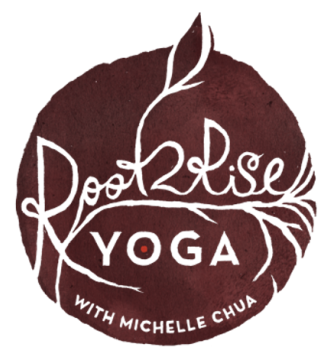
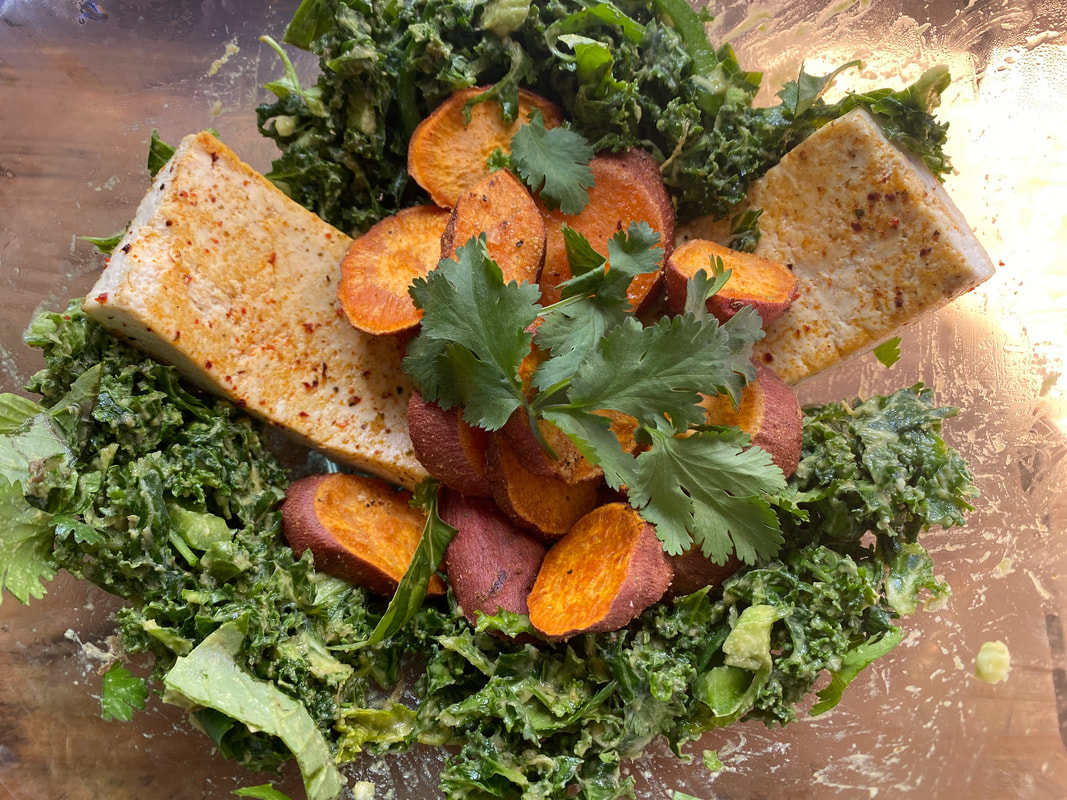
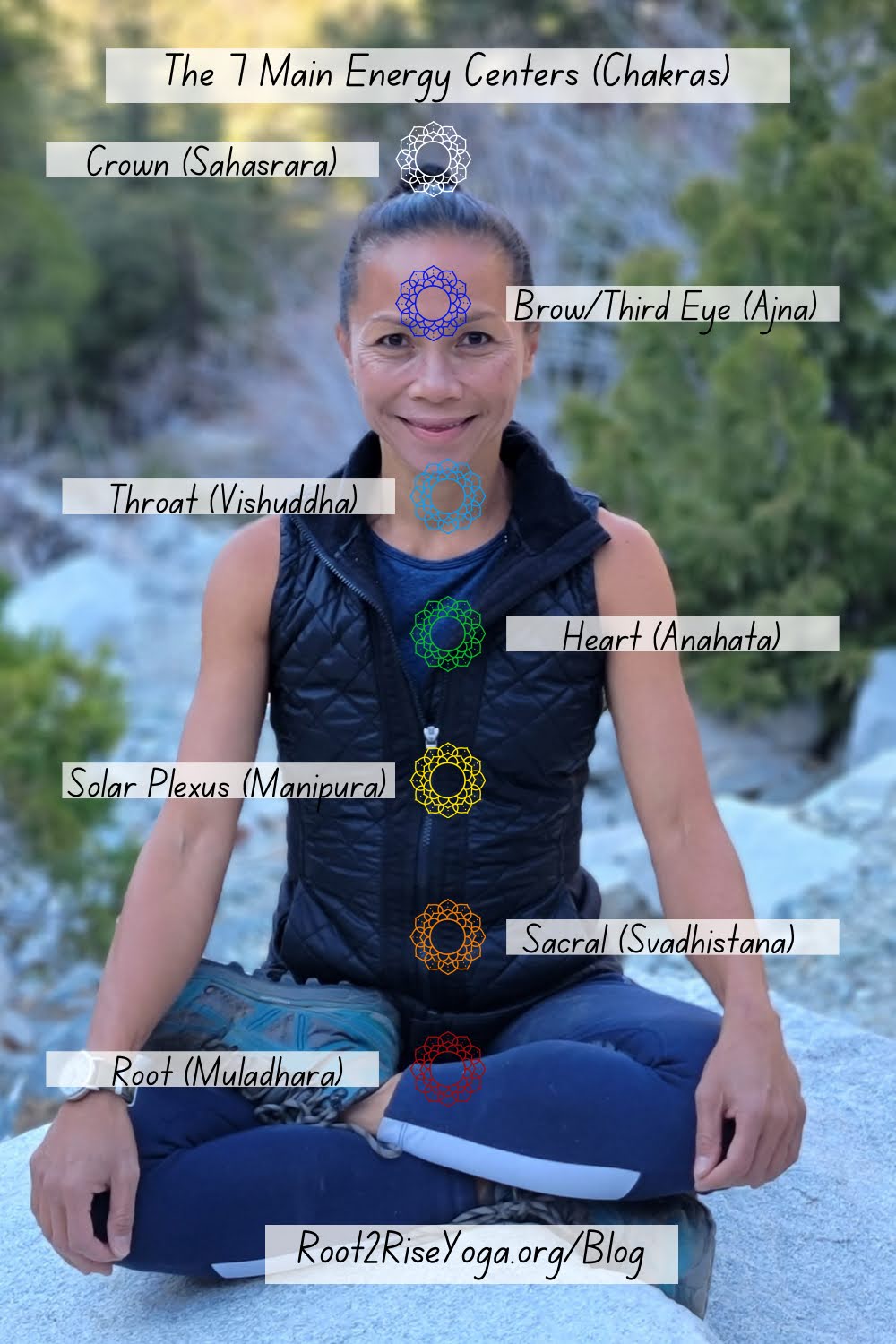
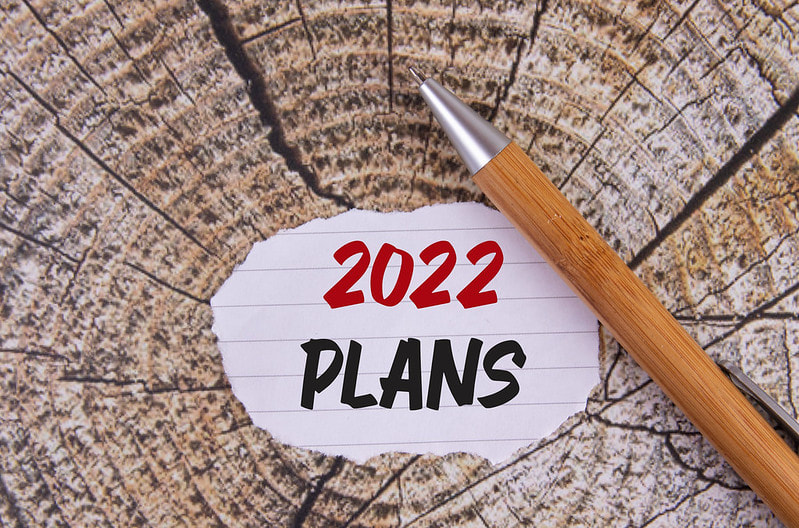
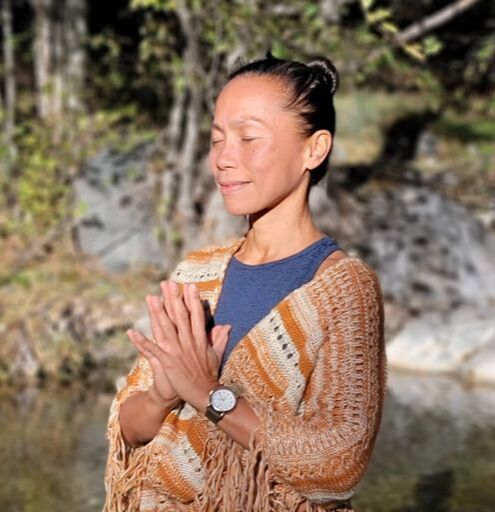
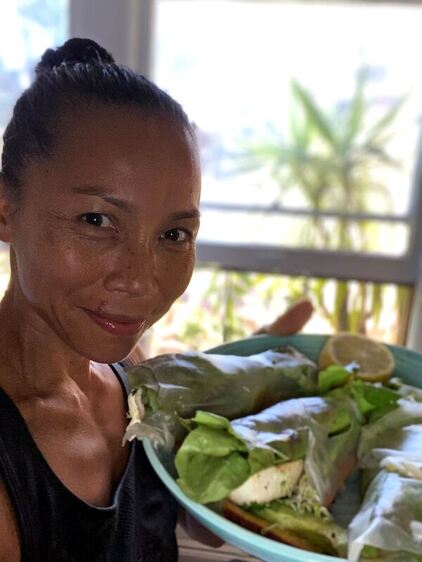
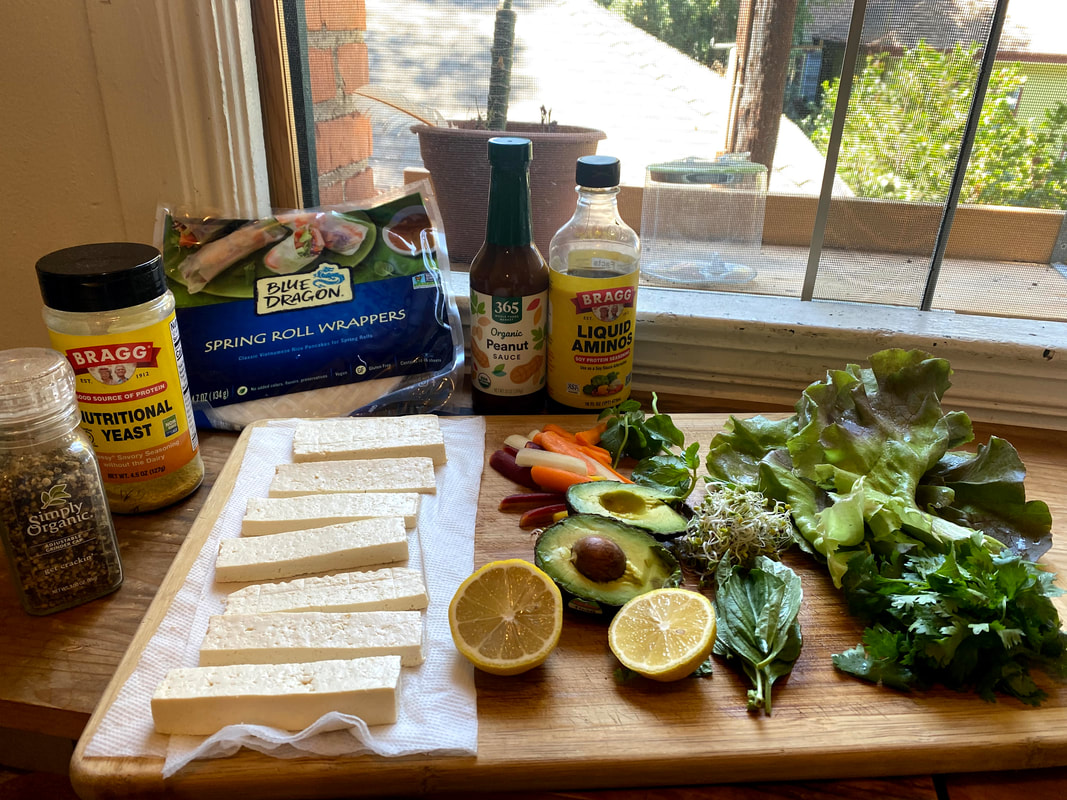
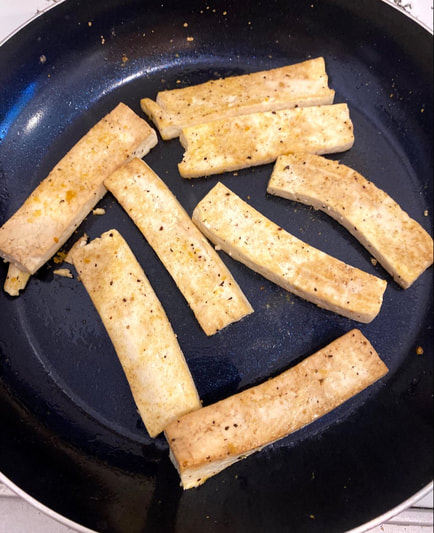
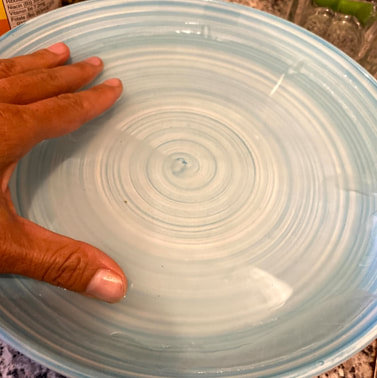
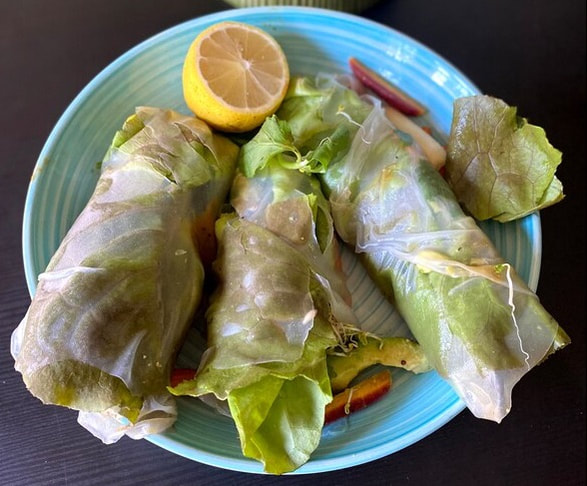
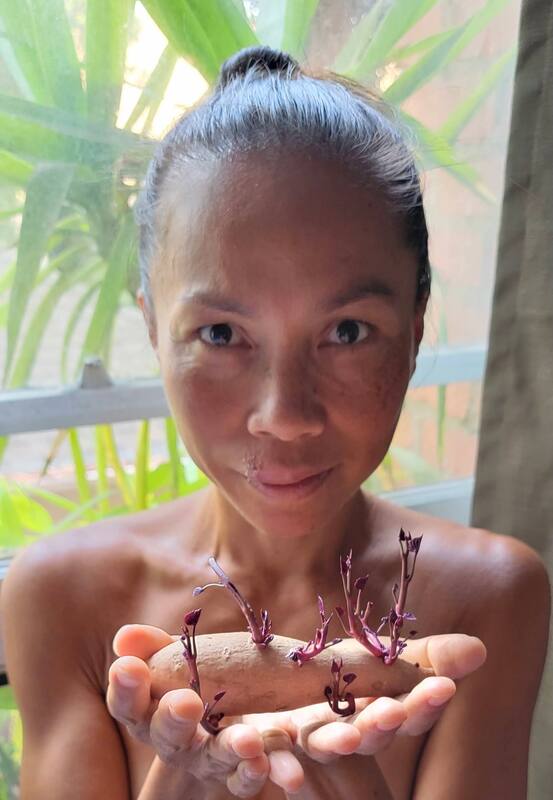
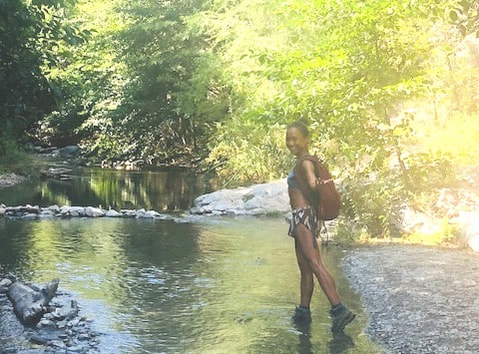
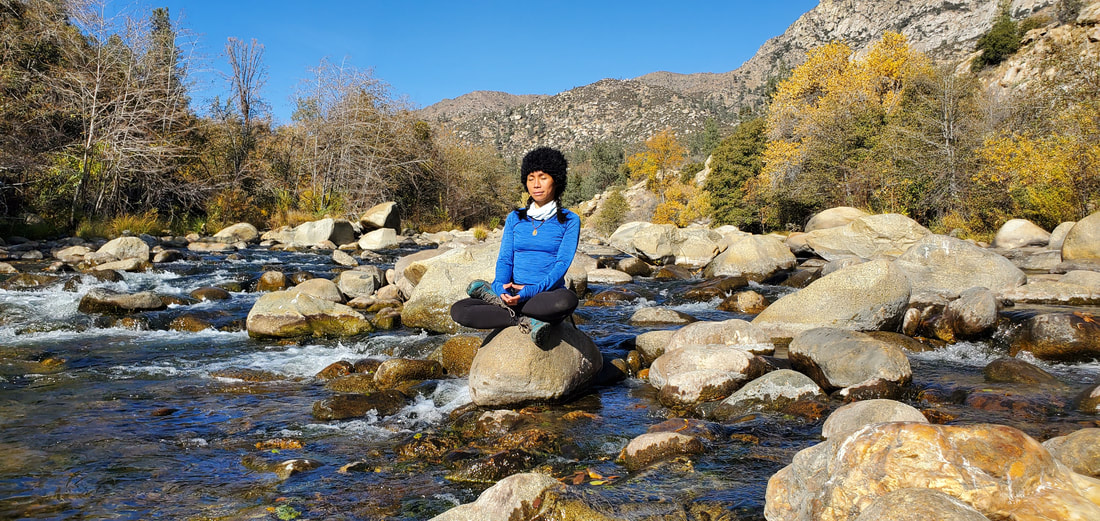
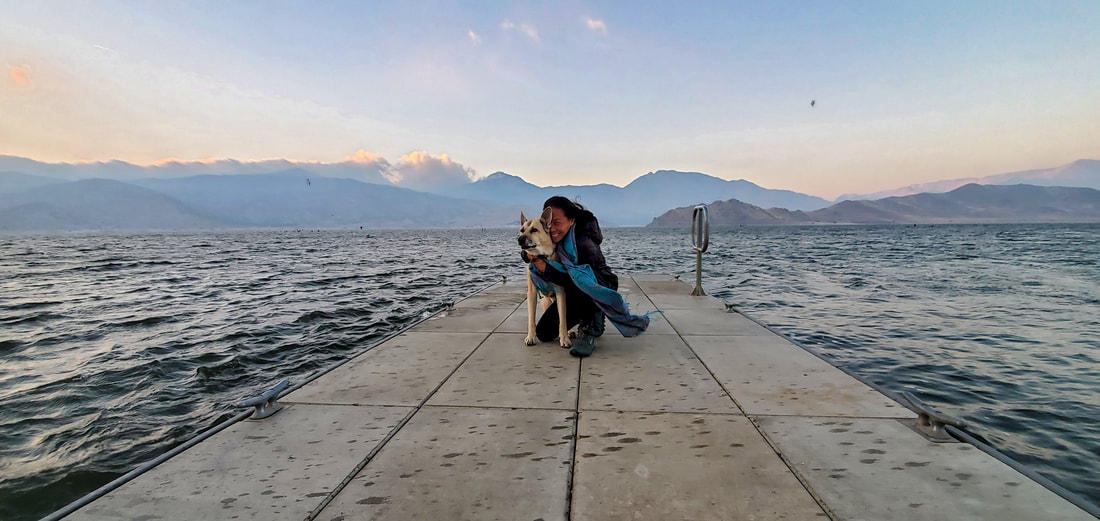
 RSS Feed
RSS Feed

